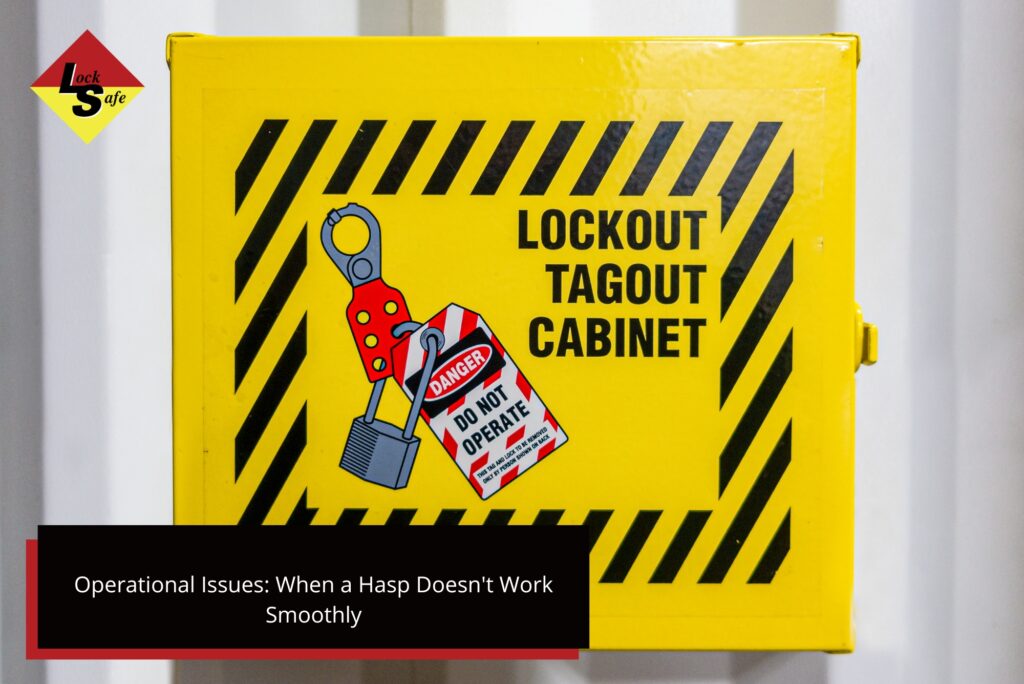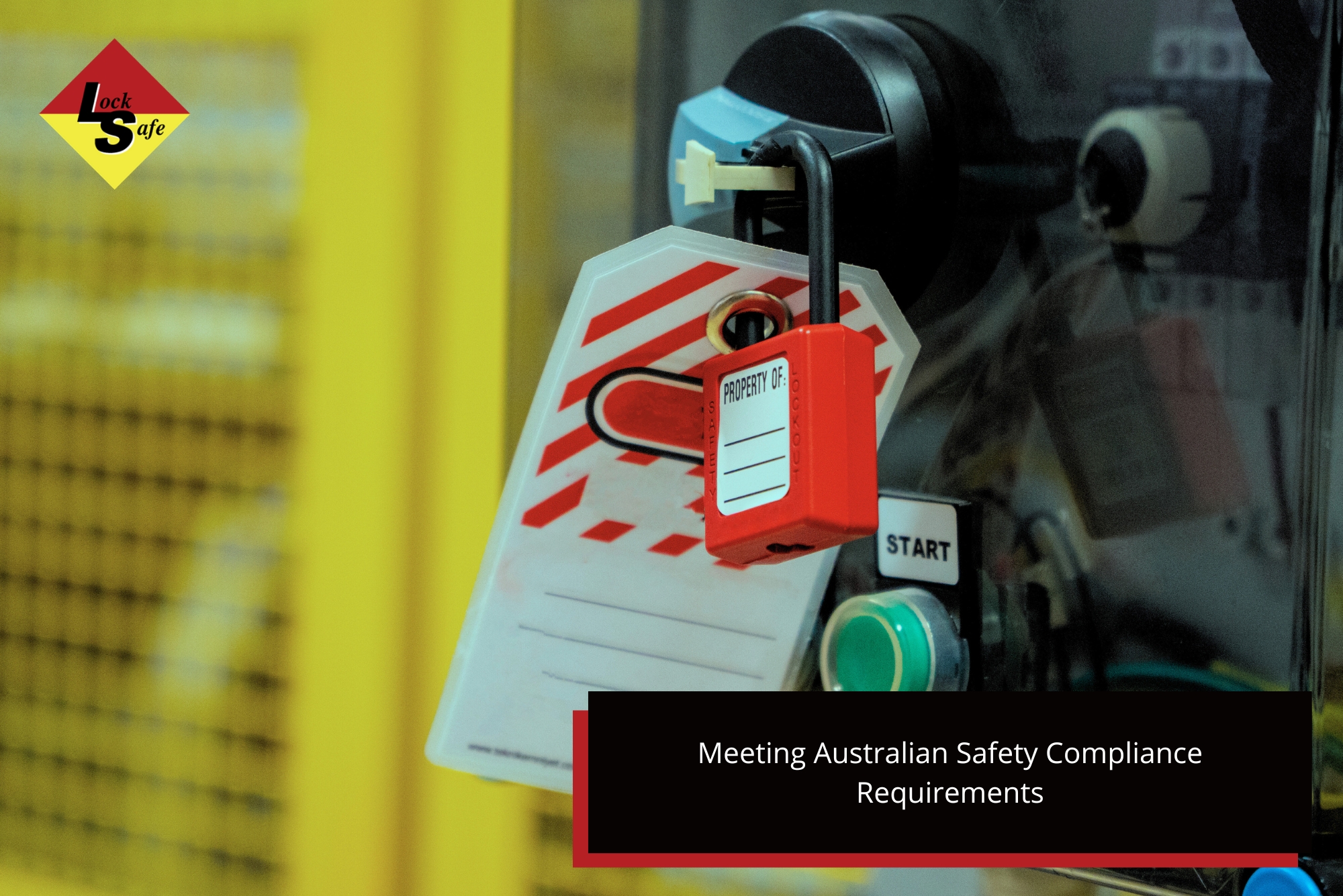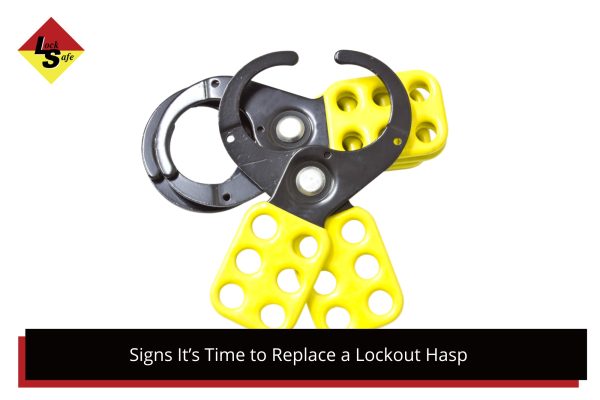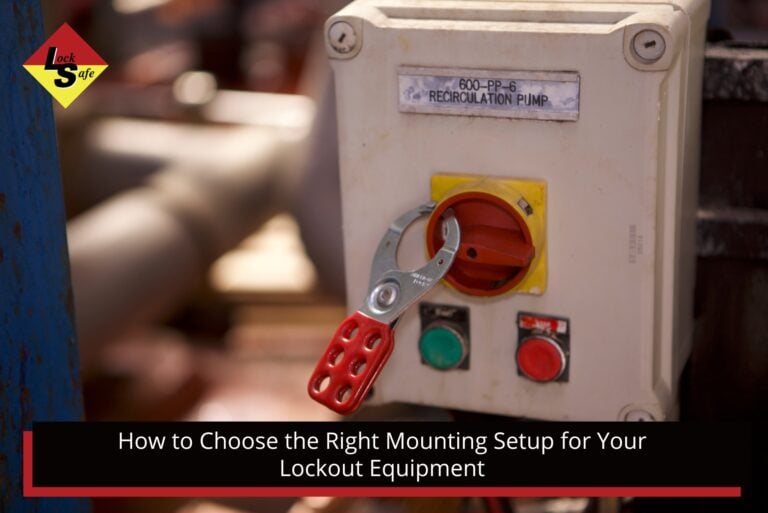Maintaining a safe working environment is paramount in Australian industries, particularly within mining, construction and manufacturing sectors. At the heart of preventing unexpected machinery start-up during maintenance or servicing lies the Lockout Tagout (LOTO) procedure. A well-executed LOTO ensures machinery is de-energised and cannot be restarted until all workers are clear. A vital component of this process is the lockout hasp. It serves a critical function, allowing multiple workers to apply their personal locks to a single isolation point, ensuring true zero-energy state until everyone involved has removed their lock. If the hasp itself is compromised, the integrity of the entire safety procedure is at risk.
Locksafe understands the demands placed on safety equipment in the harsh conditions found across Australia, from the mines of Western Australia to construction sites in New South Wales and industrial facilities in Queensland. We produce effective, simple-to-use, Australian-made products built specifically to withstand these tough environments. Ensuring your lockout hasps are in optimal condition is not just good practice; it’s fundamental to protecting your workforce.
Clear Signs of Physical Deterioration

Industrial environments across Australia expose equipment to significant challenges. Dust, moisture, corrosive substances and the intense Australian sun can all take their toll. Recognising clear signs of physical deterioration on your lockout hasps is essential for maintaining safety.
Inspect hasps regularly for rust and corrosion. Metal degradation weakens the hasp’s structure. A hasp showing significant rust might fail under stress or become stiff and difficult to operate, hindering a smooth and safe LOTO process. These issues are particularly common in humid coastal areas or chemically active sites.
Look for bends or warping. Hasps can become deformed from accidental impact, rough handling or being caught in machinery – scenarios not uncommon on busy mining or construction sites. A bent hasp may not close securely, fail to align padlock holes correctly or become difficult to attach to the isolation point, compromising the lockout.
Cracks and fractures are serious indicators. Stress from repeated use, material fatigue over time or a single impact can cause small cracks, especially around hinge points or the padlock holes. A crack, no matter how small, signals that the material is failing and the hasp could break completely during a lockout procedure, potentially leading to catastrophic consequences. Visual inspection for these flaws should be a standard part of safety checks across all Australian industrial operations.
Operational Issues: When a Hasp Doesn’t Work Smoothly
Even without obvious physical breaks, a lockout hasp can be unsafe if it doesn’t operate correctly. Functional issues can create frustration, encourage unsafe workarounds and undermine the reliability of the LOTO process.
A hasp that is sticking or stiff is problematic. This can be due to internal wear, accumulated dirt or subtle deformation not immediately visible. A stiff hasp is hard to open or close smoothly, making the LOTO procedure cumbersome and potentially frustrating for workers. Safety procedures should be simple and easy to follow; difficult equipment introduces human error risk.
Difficulty aligning padlock holes is another key sign. The fundamental purpose of a hasp is to allow multiple locks. If the holes don’t line up easily or if force is required to insert or remove padlocks, the hasp is not performing its primary function reliably. Proper, easy application of locks is critical for confirming isolation status.
For scissor-style hasps, loose joints are a concern. Wobbly or excessively loose pivot points indicate the rivets or connecting materials are worn. This suggests material fatigue and potential failure points, especially when the hasp is under the tension of attached locks. These functional problems directly impact the reliability and ease of performing LOTO safely on Australian work sites.
Identification Failures: Worn or Missing Label Areas
Clear identification is a simple yet vital element of effective LOTO procedures. Workers need to be certain which piece of equipment is locked out, understand the specific hazard and potentially details about the procedure underway. Many hasps include areas for labels or are used in conjunction with specific tags.
Exposure to wear and tear, especially the strong Australian sun and constant handling, can damage or remove label areas on hasps or make accompanying tags difficult to attach or read. A hasp with a damaged label area means crucial information cannot be clearly communicated at the isolation point.
A hasp that cannot be properly identified or tagged introduces risk through potential confusion or misapplication of the lockout. Even if the hasp is physically sound, compromised identification makes the LOTO process less secure and increases the chance of error on industrial sites across Australia.
When Your Operations Evolve: Hasp Suitability Changes
Sometimes, replacing a lockout hasp isn’t due to damage but because the type of hasp is no longer suitable for the job. Operational needs can change and safety equipment must adapt accordingly.
You might need a hasp that accommodates more lock points. As maintenance teams grow or procedures are modified, more individuals may work on a single piece of equipment simultaneously. If your current hasps don’t have enough holes for everyone’s personal lock, you need to upgrade to models with greater capacity.
Different equipment sizes or isolation locations might require hasps with varying specifications. New machinery or changes to processes might introduce isolation points that require hasps with larger or smaller jaw sizes, different lengths or alternative attachment methods than your current stock provides.
Increased security needs are a growing consideration in Australian industrial safety. Certain applications or high-risk areas might demand upgrading to tamper-proof hasps. These designs offer increased security against unauthorised removal, adding an extra layer of protection. Using an outdated or unsuitable hasp type creates a gap in your LOTO system, even if the old hasp is physically sound.
The Impact of General Wear and Tear Over Time
All safety equipment has a service life and lockout hasps are no exception, particularly when used repeatedly in the challenging industrial conditions of Australia. While you might not see obvious cracks or bends, general wear and tear accumulates over time.
Signs like stretched padlock holes (making locks fit loosely), thinning metal at stress points or a general looseness that doesn’t impede function yet can indicate the hasp is nearing the end of its safe working life. These are signs of material fatigue that might not cause failure today but make the hasp more likely to fail unexpectedly tomorrow.
Waiting for a hasp to fail during a critical lockout procedure puts workers at unnecessary risk. Preventative replacement based on observed general wear, even without catastrophic damage, is a safer and more responsible approach. Quality Australian-made products like Locksafe’s are built tough for longevity, but even the most durable equipment requires regular inspection and eventual replacement as part of a robust safety program.

Meeting Australian Safety Compliance Requirements
Maintaining lockout equipment in good condition is typically a requirement under Australian workplace health and safety (WHS) regulations and relevant industry standards. These regulations are in place to protect workers from hazards associated with unexpected energy release.
Using damaged, malfunctioning or unsuitable hasps can lead to non-compliance findings during safety audits or workplace inspections. Regulators expect businesses to provide and maintain equipment that is fit for purpose and in good working order. Replacing worn hasps isn’t just best practice; it’s often a legal obligation to protect your workforce across sites from Perth to Brisbane.
Locksafe products are designed with these safety compliance requirements in mind, providing equipment that meets Australian standards for positive locking energy immobilisation.
Talk to Locksafe About Hasp Replacement Today
Inspect your current lockout hasps today for any of the signs discussed – visible damage, operational issues or suitability concerns for your current procedures. Do not delay replacement if any hasp shows signs of damage, malfunction or is no longer appropriate for the task.
Locksafe produce a comprehensive range of effective and simple to use safety compliant lockout products. If your hasps need replacing or you need equipment for a new application, Locksafe can help. We have an extensive range of scissor and tamper proof hasps to suit your individual needs, built with quality Australian manufacturing for Australian conditions. We can also customise any hasp to meet your specific requirements for positive locking energy immobilisation and interruption. Reach out to Locksafe today on +61 (0)8 9455 7255 to discuss your safety hasp needs and ensure your LOTO procedures remain secure and compliant across Australia.













